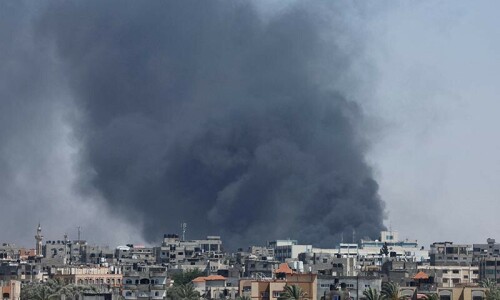ISLAMABAD: A new World Bank report has highlighted that substantial air pollution flows across borders in South Asia based on the wind direction.
“Under the predominant wind direction from the northwest to the southeast, 30 per cent of the air pollution in the Indian state of Punjab comes from Punjab Province in Pakistan and, on average, 30 per cent of the air pollution in the largest cities of Bangladesh (Dhaka, Chittagong, and Khulna) originates in India,” the ‘Striving for Clean Air: Air Pollution and Public Health in South Asia’ report says, adding that during parts of the year, substantial pollution flows in the other direction across borders.
It identifies six major airsheds in South Asia where spatial interdependence in air quality is high. An airshed is the volume over an area of land in which airborne chemicals travel to reach a particular river, lake, bay, or other body of water given the area of the land surface.
Further airsheds in Pakistan where spatial interdependence in air quality is high are the northern/central Indus River plain and south Pakistan located in southern Indus plain.
According to the report released on Wednesday, although air pollution travels far in South Asia, it does not uniformly disperse over the continent, but gets trapped in large airsheds.
The report says accounting for the interdependence in air quality within airsheds in South Asia is necessary when weighing alternative pathways for pollution control and analysed four alternative pathways for reducing air pollution in South Asia.
South Asia is home to nine of the world’s 10 cities with the worst air pollution, which causes an estimated two million premature deaths across the region each year and incurs significant economic costs. There are economically feasible, cost-effective solutions to achieve clean air in the region, but this requires countries to coordinate policies and investments, the report says.
It says concentrations of fine particulate matter such as soot and small dust in some of the region’s most densely populated and poor areas are up to 20 times higher than what WHO considers healthy.
Large industries, power plants and vehicles are dominant sources of air pollution around the world, but in South Asia, other sources make substantial additional contributions.
These include combustion of solid fuels for cooking and heating, emissions from small industries such as brick kilns, burning of municipal and agricultural waste, and cremation.
The report says regional cooperation could help implement cost-effective joint air pollution strategies that leverage spatial interdependence in air quality.
Published in Dawn, December 16th, 2022
The previous version of the story erroneously mentioned that India contributed 30pc of the air pollution in Pakistan’s Punjab province. The error is regretted.













































